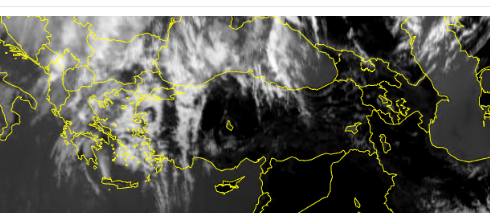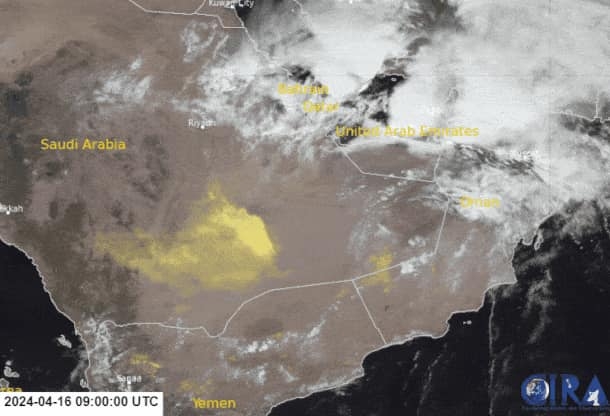Red sky at night and other weather lore
________________________________________
How many of these weather sayings do you recognise and is there any truth to them?
In this article we look at some of these sayings and whether there is any science to back them up.
Dating back thousands of years, weather forecasting had to rely less on scientific data and more on human experience. The sayings became particularly important in sailing and agriculture, as they looked for reliable forecasts ahead of time.
From this, developed the old weather sayings and phrases we see and hear today.
Red sky at night
The concept of "Red sky at night, shepherd's delight. Red sky in the morning, shepherd's warning" first appears in the Bible in the book of Matthew. It is an old weather saying often used at sunrise and sunset to signify the changing sky and was originally known to help the shepherds prepare for the next day's weather.
Despite there being global variations in this saying such as "Red sky at night, sailors delight. Red sky in morning, sailors warning", the scientific understanding behind such occurrences remains the same.
Why does a red sky appear at sunrise and sunset?
The saying is most reliable when weather systems predominantly come from the west as they do in the UK. "Red sky at night, shepherds delight" can often be proven true, since red sky at night means fair weather is generally headed towards you.
A red sky appears when dust and small particles are trapped in the atmosphere by high pressure. This scatters blue light leaving only red light to give the sky its notable appearance.
A red sky at sunset means high pressure is moving in from the west, so therefore the next day will usually be dry and pleasant. "Red sky in the morning, shepherds warning" means a red sky appears due to the high-pressure weather system having already moved east meaning the good weather has passed, most likely making way for a wet and windy low-pressure system.
St Swithun's Day
The saying goes:
St. Swithun’s day, if thou dost rain,
For forty days it will remain;
St. Swithun’s day, if thou be fair,
For forty days 'twill rain no more
This story originated with St. Swithun, the Bishop of Winchester in the Anglo-Saxon era. He initially requested to be buried outside where he said he might be subject 'to the feet of passers-by and to the raindrops pouring from on high.'
On 15 July, more than a century later, his body was moved to an indoor shrine and so began the heavy shower. This was said to be a result of the saint's anger at being moved.
The rain continued from 15 July for 40 days and nights. This led to a folklore myth that whatever the weather is like on 15 July will be how it is on the following 40 days and nights.
Does it really happen?
The jet stream does play an important part in predicting how the weather would be for the next 40 days and nights from the end of June/early July. The location of the jet stream shortly after the summer solstice largely determines the following summer's weather.
If the jet stream is located southerly then it is likely to be a more unsettled summer. If the jet stream is in a northerly position then the weather is likely to be brighter and dry throughout summer.
However, this does not prove that heavy rainfall for St. Swithun's Day and the following 40 days and nights could happen. In fact, since records began there has been no occurrence of rainfall for such a prolonged period of time.
More weather sayings and lore
When halo rings Moon or Sun, rain's approaching on the run
When a ring appears around the Moon or Sun, sometimes referred to as haloes, this suggests rainfall may be approaching. The halo is caused by ice crystals formed in high clouds. These ice crystals then refract the light from the Moon or Sun. As the ice crystals travel lower, precipitation becomes more likely. In summer months particularly, the Halo can be a sign of approaching storms.
A ring appearing around the Moon or Sun may also be a result of a 'corona'. Where the formation of a halo is due to light refraction, a corona is formed from light being diffracted. As the light travels through the cloud, it is deflected around the water droplets. This causes a corona which appears as a circle around the light source.
When the wind is out of the East, tis never good for man nor beast
This weather proverb carries some truth if you consider the various air masses that affect Britain and its weather. The air mass coming in from a northeasterly direction is the 'polar continental;' record low temperatures have been seen due to this air mass affecting Britain. This air mass originates in places such as Eastern Europe and Russia to affect Britain with bitterly cold winds in winter and dry, warm winds in summer. Although, it is usually only apparent in Britain during winter (between November and April).
Mackerel sky and mare's tails make tall ships carry low sails
This weather proverb originates from a nautical background when different cloud types were used to determine whether sails needed to be lowered. Also referred to as just a 'mackerel sky', it is associated with altocumulus clouds while 'mare's tails' refer to cirrus clouds. Both could develop before the instance of a storm, which would lead to the lowering of the ship's sails. Altocumulus clouds appear when there is a certain level of moisture in the air suggesting rainfall is approaching. The term "mackerel sky" comes from the clouds resemblance to the scales of a mackerel.
Rain before seven, fine by eleven
This refers to the fact that weather systems tend to be variable and move through the UK fairly quickly, with the prevalent westerly airflow off the Atlantic. Whilst this can sometimes mean that a low-pressure front may have moved through in a morning, this is not always the case and rain can (and often does) stay around for longer than a morning.
Whilst this saying may sometimes be true, it is far from reliable.
Cows lie down when it’s about to rain
An age old piece of weather lore says that cows lying down is a sign that rain is on the way.
Several theories have been proposed for this, some say that cows are particularly sensitive to atmospheric pressure, while others have suggested that they sense the moisture in the air and lie down to save themselves a dry patch of grass.
However, cows lie down for many reasons and there's no scientific evidence that rain is one of them.
More likely they are just relaxing and chewing their cud.
Pine cones open when good weather is on the way
This is one of the sayings that is grounded in scientific fact.
The opening and closing of pines cones is dictated by humidity.
In dry weather, pine cones open out as the drying scales shrivel and stand out stiffly. In damp conditions the increased moisture allows more flexibility and the cone returns to its normal closed shape.
It’s too cold to snow
The main basis for this myth is that the cooler the air is, the less moisture it is able to hold. However, even the coldest air is still able to hold some moisture, so while it may be unlikely to snow, it is still possible.
Furthermore, there are many other factors beyond temperature which determine whether or not snow will form
Red sky at night and other weather lore
________________________________________
How many of these weather sayings do you recognise and is there any truth to them?
In this article we look at some of these sayings and whether there is any science to back them up.
Dating back thousands of years, weather forecasting had to rely less on scientific data and more on human experience. The sayings became particularly important in sailing and agriculture, as they looked for reliable forecasts ahead of time.
From this, developed the old weather sayings and phrases we see and hear today.
Red sky at night
The concept of "Red sky at night, shepherd's delight. Red sky in the morning, shepherd's warning" first appears in the Bible in the book of Matthew. It is an old weather saying often used at sunrise and sunset to signify the changing sky and was originally known to help the shepherds prepare for the next day's weather.
Despite there being global variations in this saying such as "Red sky at night, sailors delight. Red sky in morning, sailors warning", the scientific understanding behind such occurrences remains the same.
Why does a red sky appear at sunrise and sunset?
The saying is most reliable when weather systems predominantly come from the west as they do in the UK. "Red sky at night, shepherds delight" can often be proven true, since red sky at night means fair weather is generally headed towards you.
A red sky appears when dust and small particles are trapped in the atmosphere by high pressure. This scatters blue light leaving only red light to give the sky its notable appearance.
A red sky at sunset means high pressure is moving in from the west, so therefore the next day will usually be dry and pleasant. "Red sky in the morning, shepherds warning" means a red sky appears due to the high-pressure weather system having already moved east meaning the good weather has passed, most likely making way for a wet and windy low-pressure system.
St Swithun's Day
The saying goes:
St. Swithun’s day, if thou dost rain,
For forty days it will remain;
St. Swithun’s day, if thou be fair,
For forty days 'twill rain no more
This story originated with St. Swithun, the Bishop of Winchester in the Anglo-Saxon era. He initially requested to be buried outside where he said he might be subject 'to the feet of passers-by and to the raindrops pouring from on high.'
On 15 July, more than a century later, his body was moved to an indoor shrine and so began the heavy shower. This was said to be a result of the saint's anger at being moved.
The rain continued from 15 July for 40 days and nights. This led to a folklore myth that whatever the weather is like on 15 July will be how it is on the following 40 days and nights.
Does it really happen?
The jet stream does play an important part in predicting how the weather would be for the next 40 days and nights from the end of June/early July. The location of the jet stream shortly after the summer solstice largely determines the following summer's weather.
If the jet stream is located southerly then it is likely to be a more unsettled summer. If the jet stream is in a northerly position then the weather is likely to be brighter and dry throughout summer.
However, this does not prove that heavy rainfall for St. Swithun's Day and the following 40 days and nights could happen. In fact, since records began there has been no occurrence of rainfall for such a prolonged period of time.
More weather sayings and lore
When halo rings Moon or Sun, rain's approaching on the run
When a ring appears around the Moon or Sun, sometimes referred to as haloes, this suggests rainfall may be approaching. The halo is caused by ice crystals formed in high clouds. These ice crystals then refract the light from the Moon or Sun. As the ice crystals travel lower, precipitation becomes more likely. In summer months particularly, the Halo can be a sign of approaching storms.
A ring appearing around the Moon or Sun may also be a result of a 'corona'. Where the formation of a halo is due to light refraction, a corona is formed from light being diffracted. As the light travels through the cloud, it is deflected around the water droplets. This causes a corona which appears as a circle around the light source.
When the wind is out of the East, tis never good for man nor beast
This weather proverb carries some truth if you consider the various air masses that affect Britain and its weather. The air mass coming in from a northeasterly direction is the 'polar continental;' record low temperatures have been seen due to this air mass affecting Britain. This air mass originates in places such as Eastern Europe and Russia to affect Britain with bitterly cold winds in winter and dry, warm winds in summer. Although, it is usually only apparent in Britain during winter (between November and April).
Mackerel sky and mare's tails make tall ships carry low sails
This weather proverb originates from a nautical background when different cloud types were used to determine whether sails needed to be lowered. Also referred to as just a 'mackerel sky', it is associated with altocumulus clouds while 'mare's tails' refer to cirrus clouds. Both could develop before the instance of a storm, which would lead to the lowering of the ship's sails. Altocumulus clouds appear when there is a certain level of moisture in the air suggesting rainfall is approaching. The term "mackerel sky" comes from the clouds resemblance to the scales of a mackerel.
Rain before seven, fine by eleven
This refers to the fact that weather systems tend to be variable and move through the UK fairly quickly, with the prevalent westerly airflow off the Atlantic. Whilst this can sometimes mean that a low-pressure front may have moved through in a morning, this is not always the case and rain can (and often does) stay around for longer than a morning.
Whilst this saying may sometimes be true, it is far from reliable.
Cows lie down when it’s about to rain
An age old piece of weather lore says that cows lying down is a sign that rain is on the way.
Several theories have been proposed for this, some say that cows are particularly sensitive to atmospheric pressure, while others have suggested that they sense the moisture in the air and lie down to save themselves a dry patch of grass.
However, cows lie down for many reasons and there's no scientific evidence that rain is one of them.
More likely they are just relaxing and chewing their cud.
Pine cones open when good weather is on the way
This is one of the sayings that is grounded in scientific fact.
The opening and closing of pines cones is dictated by humidity.
In dry weather, pine cones open out as the drying scales shrivel and stand out stiffly. In damp conditions the increased moisture allows more flexibility and the cone returns to its normal closed shape.
It’s too cold to snow
The main basis for this myth is that the cooler the air is, the less moisture it is able to hold. However, even the coldest air is still able to hold some moisture, so while it may be unlikely to snow, it is still possible.
Furthermore, there are many other factors beyond temperature which determine whether or not snow will form














